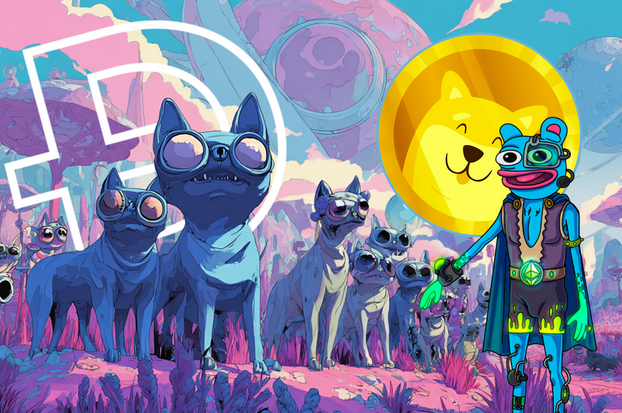Crypto markets move in cycles, and in every cycle, there’s a meme coin that captures the imagination of traders while delivering asymmetric returns. In 2021, that was Dogecoin, which rode Elon tweets and retail mania to historic highs. By 2023, it was Pepe Coin. Now, in 2025, analysts say the baton has passed to Layer Brett, a viral Ethereum Layer 2 meme token that’s already closing in on a major milestone of $2.5 million in presale.
With staking APYs north of 1000% and deep ties to Ethereum’s scaling ecosystem, many believe it could deliver a 17,500% surge before 2026 — eclipsing both Dogecoin and Pi Network Coin in the process.

Why Dogecoin can’t carry the torch anymore
There’s no denying Dogecoin’s role in crypto history. Its 2021 run was the first time a “pure meme” became a household name, pulling in retail investors who knew nothing about DeFi or Layer 2s. But that chapter has closed. DOGE has since stalled around $0.20–$0.22 and is drifting aimlessly without real-world utility, DeFi integrations, or institutional adoption.
Yes, technical charts sometimes flash buy signals, but the broader sentiment is clear: DOGE is nostalgia, not innovation. Betting on it now is betting on crumbs. A $1 DOGE would take tens of billions in fresh inflows, and in a market hungry for efficiency and utility, that’s an unlikely proposition.
Pi Coin hype has collapsed
If Dogecoin is a “boomer coin,” then Pi Coin is a ghost. Launched with much fanfare as a mobile mining experiment, Pi Network promised inclusion and easy adoption. Instead, its tokenomics faltered, listings were inconsistent, and price action cratered. Today, Pi Coin sits at all-time lows.
On-chain data shows shrinking volume and dwindling wallet activity. Could it bounce? Perhaps. But that’s just not the same as chasing generational wealth. Better plays are on the board.
Why Layer Brett is the best play on the board
Unlike DOGE and PI, Layer Brett combines meme virality with actual blockchain utility and a working product. Built as an Ethereum Layer 2, it delivers lightning-fast transactions, ultra-low fees, and staking rewards that dwarf anything offered by legacy tokens. With Ethereum Layer 2s forecasted to process over $10 trillion annually by 2027, capital is already flowing into this corner of the market.
Here’s what makes Layer Brett stand out:
- Early-stage presale access. Still available at $0.0053 until the next round.
- Ethereum Layer 2 infrastructure. Scalability, low fees, and high speed.
- Staking rewards. APYs in the thousands, rewarding early adopters.
- Cultural firepower. Meme-driven virality with real-world blockchain integration.
Every dollar flowing into Ethereum strengthens Layer Brett’s runway, creating a feedback loop where both infrastructure adoption and meme appeal work in tandem.

Layer Brett to flip Pi Coin? The math works out
For traders looking at 100x, 200x, or even 175x ROI, the math doesn’t lie. Dogecoin is too big to grow like it once did. Pi Coin is too broken to inspire confidence. Layer Brett, on the other hand, is at the ground floor with institutional tailwinds and meme culture behind it.
By 2026, analysts say a 17,500% surge is not just possible — it’s plausible. And when that happens, flipping Pi Coin is just the start. The real target? Becoming Ethereum’s dominant meme Layer 2, the project that takes meme coins out of nostalgia and into the future.
LBRETT is available now at $0.0053. Don’t miss out on the next 100x—join the Layer Brett presale today.
Website: https://layerbrett.com
Telegram: https://t.me/layerbrett
X: Layer Brett (@LayerBrett) / X
Disclaimer: This media platform provides the content of this article on an "as-is" basis, without any warranties or representations of any kind, express or implied. We assume no responsibility for any inaccuracies, errors, or omissions. We do not assume any responsibility or liability for the accuracy, content, images, videos, licenses, completeness, legality, or reliability of the information presented herein. Any concerns, complaints, or copyright issues related to this article should be directed to the content provider mentioned above.






